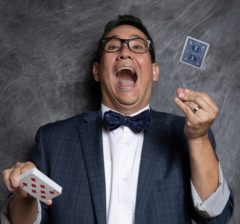Yesterday on the stage that I’m performing on at a county fair there was no sound tech. This is fine for me, as I reasonably understand how to turn on a PA and use a sound board. It’s really not hard, since I’m not singing to get my voice to sound right. When I first … Continue reading “Be Prepared!!!!”
Yesterday on the stage that I’m performing on at a county fair there was no sound tech. This is fine for me, as I reasonably understand how to turn on a PA and use a sound board. It’s really not hard, since I’m not singing to get my voice to sound right. When I first got into performing and encountered sound boards, I asked the tech to show me the basics. I learned what all the knobs do, I barely understand how to use them, however I can get my show up and running (usually) without a sound tech.
On the stage I was performing on there was a dance school right after my show. I finished my show and unplugged my cords and put them with my stuff. The leader of the dance group freaked out, she didn’t know what to do for her audio. She was very unprepared. She asked for my help, and I asked her if she had brought a cord? She said she didn’t know she needed one, and I told her I didn’t know I needed one either.
Here’s the kick in the butt, she didn’t even have the right connector to get her iphone to connect to the standard 3.5mm cord!!! Even if there was a cord, she couldn’t have plugged her phone into the sound board.
I really wanted to pull her aside, but she was mid-meltdown and tell this is a teachable moment. Instead of freaking out, she should get her dancers and tell them the problem and it being a result of her not being prepared for the worst. As a performer that’s a good skill to have. If you have a prop or piece of gear that’s easily lost, have two of them. If there’s an essential cord or adapter that the venue should have, but cost less than $10 and easily fits in your bag, you should have one!
For under $50 she could have a mic, mic cord, and a cord to plug her iPhone in. She really should have a dedicated iPhone for the show, and her personal phone should be a back up. After seeing how she reacted at how unprepared SHE was, I wouldn’t let my kid go to her dance school.
